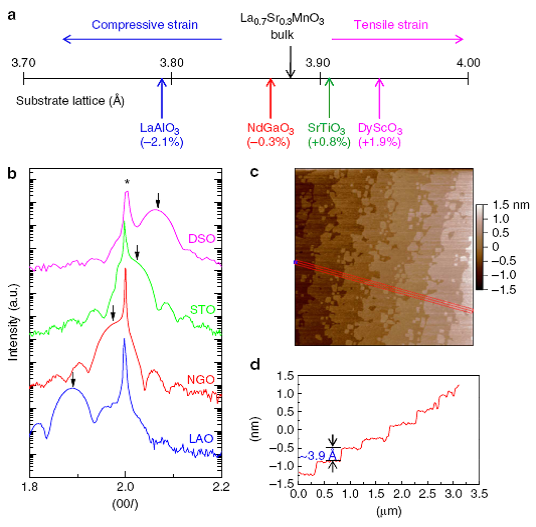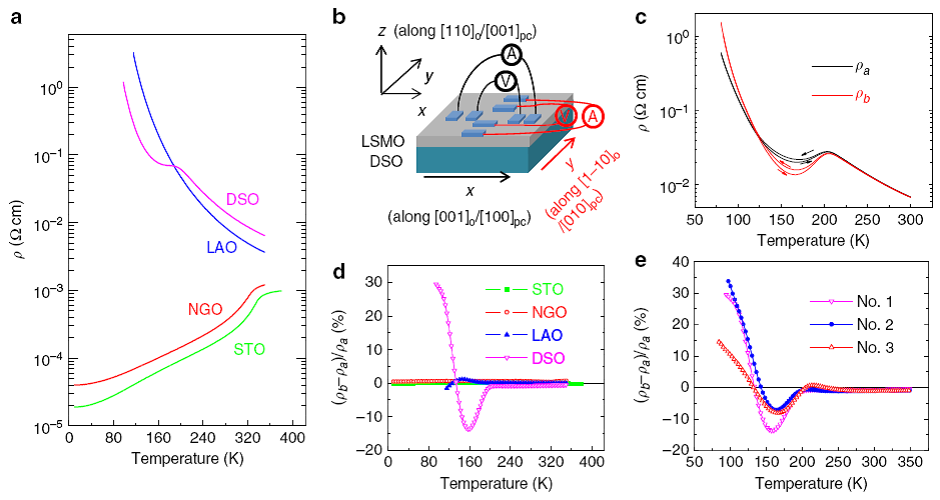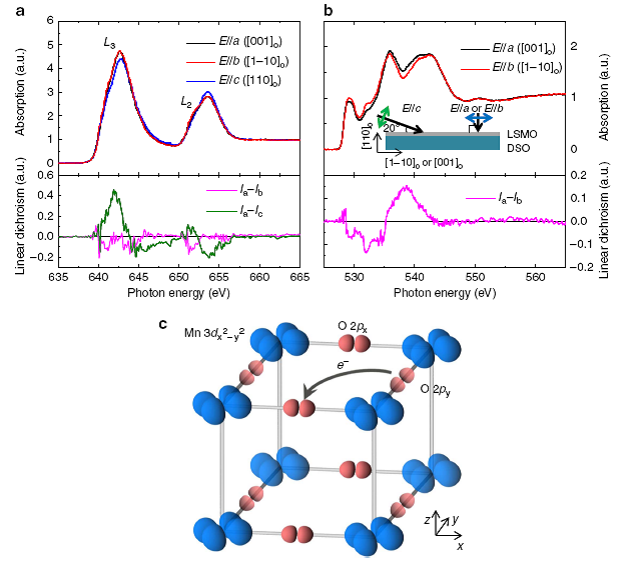Recently, an anisotropic electronic liquid phase (Nematic phase) has been found in SCES. It has been suggested to be a critical importance for the understanding of high-Tc superconductivity. The search for new systems with nematic phase is an active field of research because it may explain many anomalous physical properties. Furthermore, the microscopic origin of this new electronic phase is unclear.
Associate professor Baomin Wang, who is from the Key Lab of Magnetic Materials and Devices in the Ningbo Institute of Materials Technology and Engineering (NIMTE), the Chinese Academy of Sciences (CAS), investigated electrical transport behavior of ultra-thin manganite thin films under different strains. Firstly, they fabricated high-quality epitaxial La0.7Sr0.3MnO3 thin films on different single crystal substrates by using pulsed laser deposition (PLD).The unit cell level steps in the topography image clearly revealstep flow growth mode of the films and the high-resolution XRD patterns confirm the strain can be changed from compressive to tensile by choosing suitable substrate (Fig.1).
Subsequently, they studied electrical transport behavior of La0.7Sr0.3MnO3 under different strains (Fig.2). Abnormal transport anisotropy is found in film under large tensile strain. While it is absent in films under smaller tensile strain or compressive strain. Furthermore, thickness and magnetic field dependent experiments suggest that the tensile strain-induced two-dimensional character is crucial for the observed phenomena. X-ray absorption spectroscopy results indicate that this anisotropy is likely driven by O 2p orbital, which hybridizes with Mn 3d.Ab initio calculations confirm this result (Fig.3). These results may help to understand the anisotropic transport behavior or nematic phase observed in other systems.

Fig.1 High-resolution XRD spectroscopy on different substrates and surface topography of LSMO films (The results indicate that high quality of the LSMO thin films and its strain state can be changed by choosing different substrates)

Fig.2 The electrical transport of LSMO under different strains (The results show that in-plane anisotropy resistivity is only observed in the film under larger tensile stain)

Fig.3 The Mn-3d and O-2p X-ray absorption spectroscopy and electron transfer between the hybrid orbital for LSMO under large tensile strain. (The results show that there is a negligible anisotropy for Mn-3d orbital; While Mn3d-O2p orbital hybridization shows abnormal anisotropy. This result indicates that transport anisotropy is likely driven by O 2p orbital, which hybridizes with Mn 3d)
Prof.Baomin Wang wangbaomin@nimte.ac.cn
All images by 

